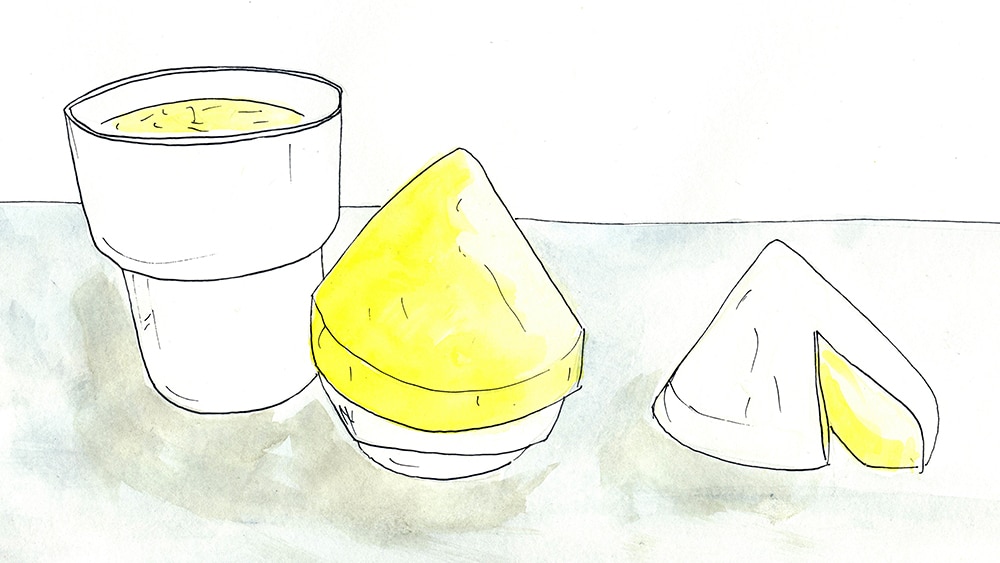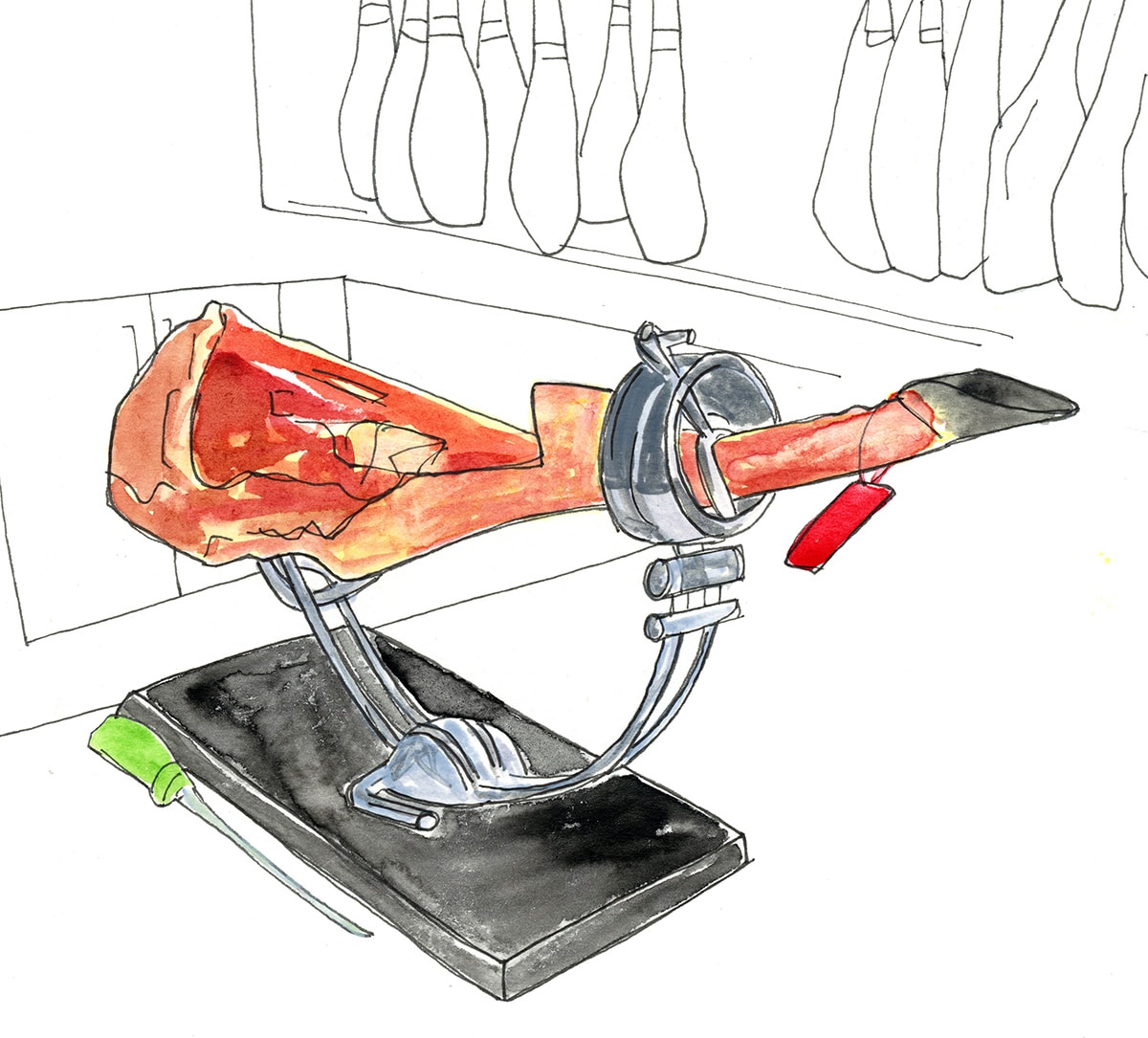Tools of the trade: the cheese mould
Arthur Alsop of Alsop & Walker on one of the essential tools of his business


“THE BELL SHAPE OF THE LORD LONDON MIGHT BAFFLE A FEW WHEN IT COMES TO CUTTING ETIQUETTE”
Interview & illustration: Ed Smith
At Alsop & Walker, Lord London is our best-selling white bloom cheese. It is made using the mould of a Spanish cheese called ‘tetilla’, which means nipple – though it’s probably more like a bell shape at first glance. My business partner Nic had lived in Spain for a while, so he and his wife wanted to try making tetilla, which I wasn’t familiar with. He brought some back, and to be honest I didn’t really like it. But I did like the shape, so we decided to make a variation that was more to our taste.
The moulds we use are the same as for the Spanish cheese – we bought them from a Spanish supplier – but the shape is the only similarity. Our cheese is far more exciting on the palate. On the outside, it has a white bloom similar to a brie or camembert. Inside, it’s a similar texture to a brie, though taste-wise it’s a cross between the two. It’s neither one nor the other. In fact, I’d say it’s unique.
The milk, a mixture of friesian and guernsey, comes predominately from three farms local to us in East Sussex. Because the guernsey milk is so rich, our acidification process is quite slow, which results in complex, layered flavours coming through. The fresh milk goes in the vat and is inoculated with various bacteria and yeasts. Quite quickly, the milk splits into curds and whey – the curd is what becomes cheese. When we cut the curds, we salt them, then push them into the tetilla moulds. These are basically stacked on top of each other within a cheese vat, which helps to press the curds. We monitor the pH of the cheeses continually for about 24 hours while they are being pressed. During that time, they lose a little moisture, develop acidity and become firmer, and when they’re at our desired level of acidity, we turn them out of the moulds and stack them on shelves in the maturing room.
After about seven days we start to see white mould growing on the cheese. Two to three weeks later they’ll be ready to wrap. The cheese will carry on maturing, getting softer and softer over another two months. We tend to make around 300 Lord Londons in every batch, as we have 320 moulds. The bell shape of the Lord London might baffle a few when it comes to cutting etiquette. The shape certainly creates a new angle to the great debate of whether or not it’s polite to cut the nose off a wedge of cheese! But for the record, I tend to cut slices from the cheese as if I was cutting a cake – from the point of the bell, straight down the middle.


